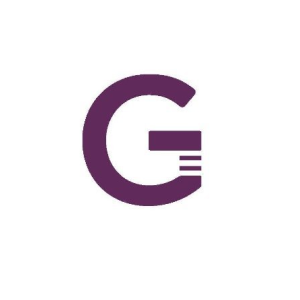GRAIL PATHFINDER 2 Results Show Galleri ® Multi-Cancer Early Detection Blood Test Increased Cancer Detection More Than Seven-Fold When Added to USPSTF A and B Recommended Screenings
Rhea-AI Summary
GRAIL (Nasdaq: GRAL) announced positive PATHFINDER 2 results showing the Galleri multi-cancer early detection test increased cancer detection >7-fold when added to USPSTF A and B recommended screenings.
Key metrics from 23,161 performance-analyzable participants (12-month follow-up): cancer signal in 216 (0.93%), cancer diagnosed in 133 (0.57%), PPV 61.6%, specificity 99.6% (0.4% false positive), episode sensitivity 73.7% for 12 cancers causing two-thirds of U.S. cancer deaths and 40.4% for all cancers. More than half (53.5%) of Galleri-detected new cancers were stage I–II. GRAIL plans a PMA submission in H1 2026.
Positive
- Cancer detection >7-fold when added to USPSTF A/B screenings
- 53.5% of Galleri-detected new cancers were stage I–II
- Positive predictive value of 61.6% after a positive test
- Specificity 99.6% (false positive rate 0.4%)
- Cancer signal origin accuracy 92% enabling efficient workups
- Episode sensitivity 73.7% for 12 cancers driving two-thirds of U.S. cancer deaths
Negative
- Episode sensitivity for all cancers was only 40.4%
- Invasive diagnostic procedures occurred in 0.6% of participants (159/25,114)
- Galleri requires regulatory approval; PMA modular submission expected in H1 2026
News Market Reaction 34 Alerts
On the day this news was published, GRAL gained 17.76%, reflecting a significant positive market reaction. Argus tracked a peak move of +6.1% during that session. Argus tracked a trough of -15.5% from its starting point during tracking. Our momentum scanner triggered 34 alerts that day, indicating elevated trading interest and price volatility. This price movement added approximately $470M to the company's valuation, bringing the market cap to $3.11B at that time.
Data tracked by StockTitan Argus on the day of publication.
More Than Half of Cancers Detected by Galleri Were Early Stage
Approximately Three-Quarters of Galleri-Detected Cancers Do Not Have Recommended Screenings
PATHFINDER 2 is the Largest
PATHFINDER 2 evaluated the safety and performance of the Galleri® multi-cancer early detection (MCED) test when used alongside standard-of-care cancer screenings. The largest interventional study of an MCED test in
"Cancer is the second leading cause of death worldwide as most deadly cancers are found too late. Adding Galleri to recommended screening for breast, cervical, colorectal, and lung cancers in PATHFINDER 2 yielded a more than seven-fold increase in the cancer detection rate, and more than half of the Galleri detected new cancers were found in early stages, when cancers are more treatable and potentially even curable. Galleri's ability to accurately predict where in the body the cancer signal comes from also helps to guide a more efficient diagnostic workup," said Josh Ofman, MD, MSHS, President at GRAIL. "These results are extremely compelling as approximately three-quarters of the Galleri-detected cancers do not have recommended screening tests today. Galleri is the only MCED test available that has been validated in an interventional trial in the screening population and could transform how we deliver cancer screening at a population level."
Finding More Cancers, Earlier By Adding the Galleri Test
Data from the performance analyzable cohort of 23,161 participants with 12 months of follow-up found that adding Galleri to recommended screenings for breast, cervical, colorectal, and lung cancers (USPSTF A and B recommendations) led to a more than seven-fold increase in the number of cancers found within a year. Galleri detected approximately three times as many cancers when added to standard-of-care screening for breast, cervical, colorectal, lung, and prostate cancers (USPSTF A, B, and C recommendations). Approximately three-quarters of the cancers detected by Galleri do not have standard of care screening options.
More than half (
"Cancer screening saves lives, but we routinely screen for just four or five cancer types in
High Performance and Low Risk of False Alarms
The Galleri test detected a cancer signal in 216 participants (cancer signal detection rate of
Since PATHFINDER 2 is a prospective clinical trial where the cancer status of participants is unknown at the outset, episode sensitivity – the ability to detect cancer that could be confirmed within 12 months after the blood draw – is a performance measure of the study. Galleri demonstrated strong performance, with
"Any multi-cancer early detection test used for population screening should aim to detect as many aggressive cancers as possible before symptoms arise and maximize the likelihood that a positive test result is actually cancer. The PATHFINDER 2 results demonstrate that the Galleri test is doing just that, increasing the number of cancers detected more than seven-fold when added to recommended screening for breast, cervical, colorectal, and lung cancers, and with a very low false positive rate," said Ofman. "What's especially promising is that Galleri showed strong sensitivity at detecting many of the cancers responsible for the majority of cancer deaths, which we believe provides clinicians with a clinically valuable and validated screening tool."
High Accuracy of Cancer Signal Origin Enabled Efficient Diagnostic Evaluation
A key benefit of Galleri is its ability to predict where in the body the cancer is coming from. The PATHFINDER 2 study demonstrated that the test correctly identified the Cancer Signal Origin (CSO)
MCED test safety was evaluated in an analyzable cohort of 25,114 participants. No serious, study-related adverse events were reported during the diagnostic workup.
Data from this study will be submitted to the
Conference call and webcast with the investment community
GRAIL management will host a conference call and webcast on Oct. 20 at 5 a.m. PT / 8 a.m. ET to discuss results of the PATHFINDER 2 study. A link to the live webcast and recorded replay will be available at the investor relations section of GRAIL's website at investors.grail.com.
Please register for the live event at this link.
To ensure timely connection, please register for the teleconference and join the webcast at least ten minutes before the scheduled start of the call. The live webcast and recorded replay are open to all interested parties.
About the PATHFINDER 2 Study (NCT05155605)
PATHFINDER 2 is a prospective, multi-center, interventional study evaluating the safety and performance of Galleri in approximately 35,000 individuals aged 50 years and older who are eligible for guideline-recommended cancer screening in
About GRAIL
GRAIL is a healthcare company whose mission is to detect cancer early, when it can be cured. GRAIL is focused on alleviating the global burden of cancer by using the power of next-generation sequencing, population-scale clinical studies, and state-of-the-art machine learning, software, and automation to detect and identify multiple deadly cancer types in earlier stages. GRAIL's targeted methylation-based platform can support the continuum of care for screening and precision oncology, including multi-cancer early detection in symptomatic patients, risk stratification, minimal residual disease detection, biomarker subtyping, treatment and recurrence monitoring. GRAIL is headquartered in
For more information, visit grail.com.
About Galleri®
The Galleri multi-cancer early detection test is a proactive tool to screen for cancer. With a simple blood draw, Galleri can detect more than 50 types of cancer before symptoms appear — when they can be easier to treat and are potentially curable2. Galleri is the only available MCED test with demonstrated performance in patients screened for cancer2,*. The Galleri test increases the number of cancers detected seven-fold when added to recommended screening for breast, cervical, colorectal and lung cancers, and has the lowest false positive rate of any MCED test on the market1,2,3,4,**. When a cancer signal is found, Galleri provides a cancer signal of origin with high accuracy to help guide an efficient diagnostic work-up4,5,6. The Galleri test requires a prescription from a licensed healthcare provider and should be used in addition to recommended cancer screenings such as mammography, colonoscopy, prostate-specific antigen (PSA) test, or cervical cancer screening. The Galleri test is recommended for adults with an elevated risk for cancer, such as those aged 50 or older.
For more information, visit galleri.com.
* The Galleri test performance metrics were derived from the outcomes of an interventional clinical study of patients presenting for screening without clinical suspicion of cancer, a study population that reflects the intended use population.
** Test performance metrics do not represent results of a head-to-head comparative study. Separate studies have different designs, objectives, and participant populations, which limits the ability to draw conclusions about comparative performance.
Important Galleri Safety Information
The Galleri test is recommended for use in adults with an elevated risk for cancer, such as those age 50 or older. The test does not detect all cancers and should be used in addition to routine cancer screening tests recommended by a healthcare provider. The Galleri test is intended to detect cancer signals and predict where in the body the cancer signal is located. Use of the test is not recommended in individuals who are pregnant, 21 years old or younger, or undergoing active cancer treatment.
Results should be interpreted by a healthcare provider in the context of medical history, clinical signs, and symptoms. A test result of No Cancer Signal Detected does not rule out cancer. A test result of Cancer Signal Detected requires confirmatory diagnostic evaluation by medically established procedures (e.g., imaging) to confirm cancer.
If cancer is not confirmed with further testing, it could mean that cancer is not present or testing was insufficient to detect cancer, including due to the cancer being located in a different part of the body. False positive (a cancer signal detected when cancer is not present) and false negative (a cancer signal not detected when cancer is present) test results do occur. Rx only.
Laboratory/Test Information
The GRAIL clinical laboratory is certified under the Clinical Laboratory Improvement Amendments of 1988 (CLIA) and accredited by the College of American Pathologists. The Galleri test was developed — and its performance characteristics were determined — by GRAIL. The Galleri test has not been cleared or approved by the Food and Drug Administration. The GRAIL clinical laboratory is regulated under CLIA to perform high-complexity testing. The Galleri test is intended for clinical purposes.
Forward Looking Statements
This press release contains forward-looking statements. In some cases, you can identify these statements by forward-looking words such as "aim," "anticipate," "believe," "continue," "could," "estimate," "expect," "intend," "may," "might," "plan," "potential," "predict," "should," "would," or "will," the negative of these terms, and other comparable terminology. These forward-looking statements, which are subject to risks, uncertainties, and assumptions about GRAIL, Inc. (the "Company"), include the benefits and use of the Galleri test, the potential of the Galleri MCED test, expectations regarding the final results of the PATHFINDER 2 study, upcoming events and presentations, the timeline and results of a bridging analysis to the FDA, the applicability of the PATHFINDER 2 results to the commercial or FDA versions of the Galleri test, and the timeline for completion of the PMA modular submission.
These statements are only predictions based on the Company's current expectations and projections about future events and trends. There are important factors that could cause actual results, level of activity, performance, or achievements to differ materially and adversely from those expressed or implied by the forward-looking statements, including those factors and numerous associated risks discussed under the section entitled "Risk Factors" in the Company's Annual Report on Form 10-K for the period ended December 31, 2024 and Quarterly Reports on Form 10-Q for the periods ended March 31, 2025 and June 30, 2025. Moreover, the Company operates in a dynamic and rapidly changing environment. New risks emerge from time to time. It is not possible for the Company's management to predict all risks, nor can the Company assess the impact of all factors on its business or the extent to which any factor, or combination of factors, may cause actual results, level of activity, performance, or achievements to differ materially and adversely from those contained in any forward-looking statements.
Forward-looking statements relate to the future and, accordingly, are subject to inherent uncertainties, risks, and changes in circumstances that are difficult to predict and many of which are outside of the Company's control. Although the Company believes the expectations and projections expressed or implied by the forward-looking statements are reasonable, it cannot guarantee future results, level of activity, performance, or achievements. Actual results and financial condition may differ materially from those indicated in the forward-looking statements. Except to the extent required by law, the Company undertakes no obligation to update any of these forward-looking statements after the date of this press release to conform prior statements to actual results or revised expectations or to reflect new information or the occurrence of unanticipated events.
References:
- Nabavizadeh N, et al. Safety and Performance of a Multi-Cancer Early Detection (MCED) Test in an Intended-Use Population: Initial Results from the Registrational PATHFINDER 2 Study. Proffered Presentation Presented at: European Society for Medical Oncology (ESMO) Annual Meeting; October 17-21, 2025;
Berlin, Germany . - Klein EA, Richards D, Cohn A, et al. Clinical validation of a targeted methylation-based multi-cancer early detection test using an independent validation set. Ann Oncol. 2021 Sep;32(9):1167-77. doi: 10.1016/j.annonc.2021.05.806
- GRAIL, Inc. False positive rate. [Data on file: GR-2025-0256]
- Schrag D, Beer TM, McDonnell CH, et al. Blood-based tests for multi-cancer early detection (PATHFINDER): a prospective cohort study. Lancet. 2023;402:1251-1260. doi: 10.1016/S0140-6736(23)01700-2
- GRAIL, Inc. Enhanced Cancer Signal Origin prediction. [Data on file: VV-TMF-59592]
- Hackshaw A, et al. Cancer Cell. 2022;40(2):109-13.
![]() View original content to download multimedia:https://www.prnewswire.com/news-releases/grail-pathfinder-2-results-show-galleri--multi-cancer-early-detection-blood-test-increased-cancer-detection-more-than-seven-fold-when-added-to-uspstf-a-and-b-recommended-screenings-302588036.html
View original content to download multimedia:https://www.prnewswire.com/news-releases/grail-pathfinder-2-results-show-galleri--multi-cancer-early-detection-blood-test-increased-cancer-detection-more-than-seven-fold-when-added-to-uspstf-a-and-b-recommended-screenings-302588036.html
SOURCE GRAIL, Inc.









